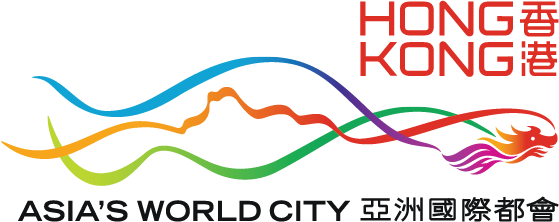When the UBS Hong Kong Open tees off at Fanling next month, Asian golfers will be aiming to end a seven-year itch. South Korea’s Kang Wook Soon was the last Asian player to win the Open when he triumphed in 1998, since when the famous old trophy has been monopolised by Europeans.
It is a run the top Asian players are determined to end, as Indian star Jyoti Randhawa (right) is quick to acknowledge. “Any of the Asians can win in a given week,” he insists. “They are all up there with the top guys. As it is, Arjun Atwal, Thongchai Jaidee, Thaworn Wiratchant and Zhang Lianwei have won European Tour events that are joint-sanctioned with the Asian Tour and I myself have been close a couple of times. I don’t think there is any difference, at least among the top stars of Asia and Europe.”
His bullish view is echoed by Asian Tour chief executive Louis Martin, who says: “We do feel our players can win at any given event. Thongchai Jaidee and Thaworn Wiratchant won the co-sanctioned events in Malaysia and Indonesia earlier this season, so our guys have produced the goods against Europe. It’s always a question of finding their form on a particular week and, somehow, European Tour players have managed to do so in Hong Kong over the last few years.
“An Asian win in the UBS Hong Kong Open would no doubt strengthen the general belief that Asian golf is now world class. But we are not just keen to see an Asian winner – we would like to see even more Asian Tour players make the halfway cut in these co-sanctioned events. Already, we have regularly achieved more than 50 per cent of our players qualifying for the weekend rounds over the past few years.”
First-year title sponsor UBS obviously has to remain neutral about who wins, but the company is looking forward to a highly competitive tournament. “Whoever triumphs at the UBS Hong Kong Open this year will have beaten a high-quality field over a challenging course and will truly deserve their win, no matter where they are from,” says Kathryn Shih, chief executive, UBS Hong Kong Branch.
“We would, of course, be happy to see an Asian player take home the title. This is one of Asia Pacific’s most prestigious championships and has been won by some of the sport’s biggest names. It would be extremely fitting for one of the region’s stars to add their name to the list this year and it would provide a huge boost to Asian golf by creating another local golfing star and acting as a catalyst for the game’s growth in the region.”
At first glance, it seems strange that in an era when Asian golf standards are higher than ever, the UBS Hong Kong Open has produced six straight European winners, but there is a logical explanation. The European Tour began co-sanctioning the event in 2001, opening the way for the continent’s top stars to compete. Two-time Masters champion Jose Maria Olazabal and Ryder Cup aces Padraig Harrington and Miguel Angel Jimenez have been among the recent winners at the Hong Kong Golf Club.
“Since the UBS Hong Kong Open became a jointly sanctioned event between the European Tour and Asian Tour, the level of play has been significantly higher,” stresses Hong Kong Golf Association chief executive Iain Valentine. “Our national Open is now considered to be one of the premier golf tournaments in Asia and, as a result, attracts some of the world’s best players. The standard of golf is, therefore exceptional.
“Having said that, I don’t think a first Asian victory since co-sanctioning began is far off at all. You only have to look back to last year’s event to see just how well the Asian Tour players competed. James Kingston came very close to forcing a playoff with the eventual champion, Miguel Angel Jimenez. Thailand’s Thammanoon Srirot also had a superb tournament last year. The Asian Tour is full of extremely talented players who can compete against their European Tour counterparts.”
Asian players are indeed rising to the challenge, on home soil, in Europe and in the toughest environment of all, the United States. Randhawa, currently third in the Asian Order of Merit, points out that playing against the best helps make you the best. “Certainly, the standards have gone up,” he says. “If you see Asian Tour events, the scores are low, and when it comes to joint-sanctioned events, Asians are doing very well. We are getting to play more events with high-quality fields.
“Once you play with players of a higher calibre, the game naturally goes up a few notches. It’s like when Indian Tour players play alongside Asian Tour players, they benefit a lot. Similarly, when Asian Tour players get to an event with European Tour players, the standards automatically rise.”
Martin agrees and adds that improvements are not limited to Asia. “The general standard of play has risen across the world – and our players have realised that. A lot of our players play regularly on various international tours and are exposed to the standards elsewhere. They know they have to run the extra mile and spend the additional hours at the range to stay on par with the world’s best players.”
The flowering of Asian golf is particularly satisfying for the region’s leading promoter, Parallel Media Asia. The company handles five European Tour events in Asia, including the UBS Hong Kong Open, and has seen the “home” players match their European counterparts stroke for stroke.
“I’ve been in the business of promoting tournaments in Asia for nine years and have personally seen a dramatic improvement in the standard of play,” says Martin Capstick, PMA’s vice-president of sales and marketing for Asia-Pacific. “These are exciting times for the sport and we’re looking forward to the first Asian to win a Major very soon.
“What’s interesting is the spread of victories in the 18 European Tour events we’ve promoted in Asia since 1999. Eight have been won by Asian Tour players and eight by European Tour players, which indicates it’s a pretty even contest. The other two, incidentally, were won by Vijay Singh, which shows the calibre of player these tournaments are attracting.”
Asian golf expert Spencer Robinson has watched the regional improvements over the past decade with interest. “Playing standards have improved dramatically in recent years and are continuing to do so – just look at the winning scores each week,” says Robinson, publisher of Asian Golf Monthly.
“By virtue of their comprehensive victories in the first two editions of the Dynasty Cup, you can argue a strong case that the cream of the Asian Tour are as good as their counterparts in Japan. Indeed, many members of the Asian team now play regularly in Japan and are frequently on the leaderboards there.
“Whether the Asian Tour yet has the depth of talent once you go beyond the top 30 on the Order of Merit is open to debate. But with Asian Tour purses rising each year, there has never been a greater incentive for its members to practice harder. And those that are practicing the hardest are reaping the dividends. Clearly, there is still some way to go before standards on the Asian Tour can compare with Europe and the US, but the gap is narrowing each year, and will continue to do so.”
Robinson has no doubts about the catalyst for the improvements in golf in the region: the setting up of a single, co-ordinated Asian Tour in the mid-Nineties. “The establishment of a properly structured and managed Asian Tour was vitally important. In the preceding three decades, professional golf in the region had been fragmented – up to 10 national Open championships annually, all with different rules and conditions, run by the respective national amateur associations.
“By creating a series of new events and binding the majority of the existing tournaments together with an Order of Merit, all under the auspices of one governing body, Asia finally had a professional ‘circuit’ in the true sense of the word. It offered the players a sensible and viable opportunity to develop their careers. Getting it off the ground was not easy, there was some staunch opposition, but it needed to happen if the game was to move forward.”
The game has indeed moved forward from the day in 1959 when Taiwan’s Lu Liang Huan – the famous “Mr Lu” who would go on to finish runner-up in the 1971 British Open – won the inaugural Hong Kong Open. Since then, the tournament has produced some illustrious winners, including eight Major champions, and it has evolved into one of the jewels in the crown of the Asian Tour.
Given the progress being made in the Asian game, UBS’s Shih believes there is every reason for optimism. “There is no doubt that the sky is the limit for Asian golf,” she says. “The sheer size of the population in the region suggests the pool of potential stars is enormous. This, combined with improving standards of play, places Asian golf on the cusp of a real breakout.
“Of course, Asian women are really dominating world golf at the moment and I am sure it is only a matter of time before the men start replicating their impressive efforts. If the younger players in elite Asian golf, who are, increasingly, benefiting from better coaching and tougher competition in events like the UBS Hong Kong Open, can take advantage of their opportunities we think the future looks very bright indeed.”
So will there be, for the first time since 1998, a “home” win in the UBS Hong Kong Open? Randhawa, certainly, believes the time is ripe. “An Asian player winning the tournament would add to the growing reputation of the region’s golfers,” he says. “We have been doing well and making our mark on the various tours, so don’t be surprised if you have an Asian winner in Hong Kong this time.”






